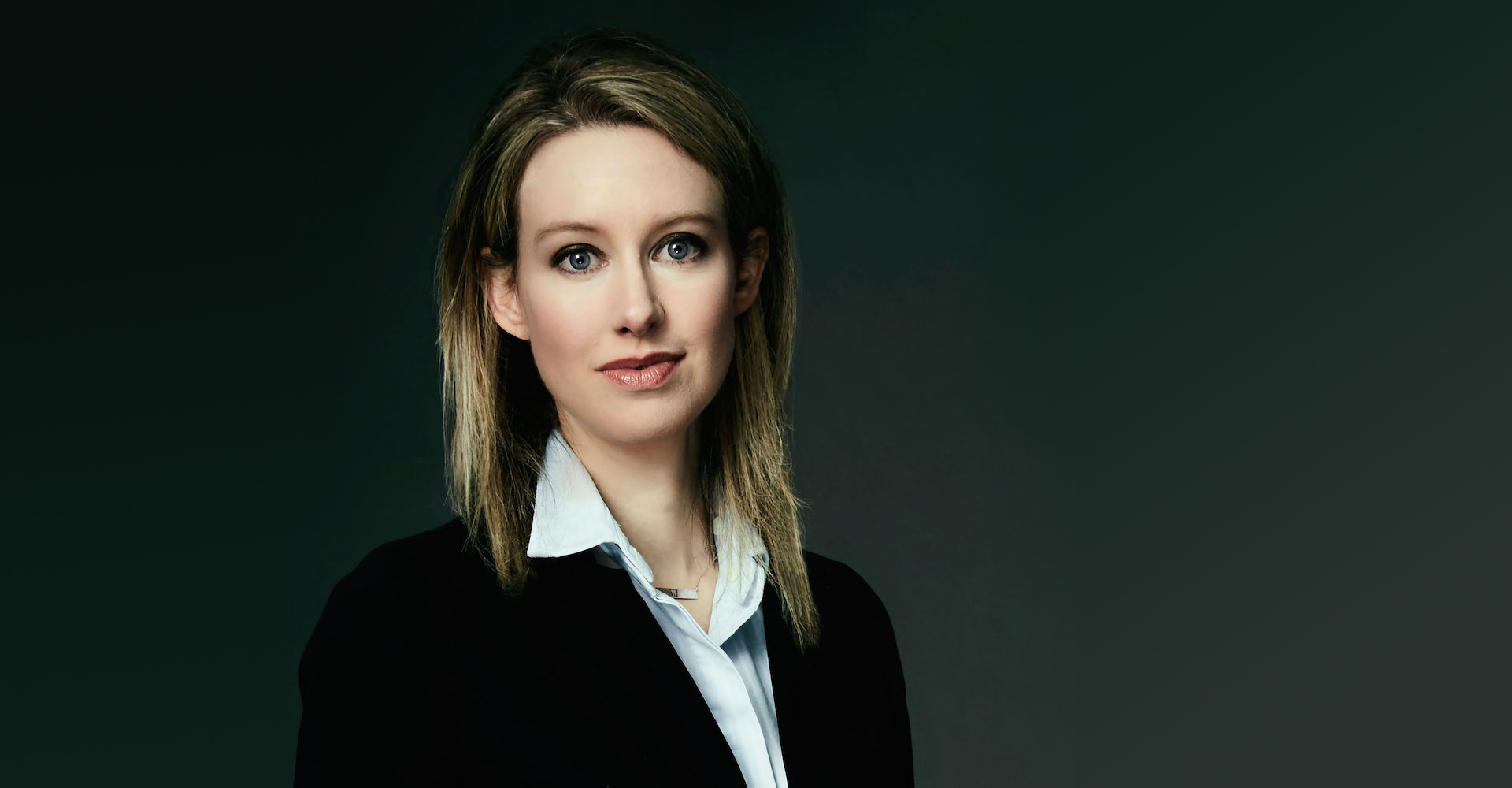Who Is Elizabeth Holmes?
American former businesswoman Elizabeth Holmes was the founder and CEO of the now-defunct health technology company Theranos, which Holmes established in 2003 at just 19 years old. In 2015, Forbes magazine broadcasted her as “the world’s youngest self-made female billionaire” in the US, while Inc. Magazine called her the “next Steve Jobs” as she adopted his signature black turtlenecks, used the same marketing firm that he had used, and frequently referred to Theranos’ then supposedly ground-breaking blood-testing system as “the iPod of healthcare.”
Back in 2014, Elizabeth Holmes was on top of the world at just thirty years old. The chemical engineering Stanford University drop-out had founded a company worth $9 billion for supposedly creating a miracle in the diagnosis of diseases. Theranos’ blood-testing system — the Edison — claimed to need only a few drops of blood to quickly and effectively detect conditions such as diabetes and cancer.
The company’s first major investor was Silicon Valley venture capitalist Tim Draper, who was the father of Holmes’ childhood friend Jesse Draper. Upon hearing Holmes’ initial pitch for the firm that would soon become Theranos, Draper wrote Holmes a cheque for $1 million. By 2015, Theranos had found its largest investor — billionaire businessman and media tycoon Rupert Murdoch who invested $125 million in the company.
However, later that same year, Holmes was exposed as a fake. Reports first came from the Wall Street Journal revealing that Theranos had dramatically overstated the function of its technology. By 2018, Holmes’ $9 billion miracle company had collapsed.
Shattering The Illusion: How John Carreyrou Exposed Theranos
The unravelling of Theranos began in 2015 as Richard Fuisz, a physician and Theranos sceptic, collected information against the company and took it to John Carreyrou at the Wall Street Journal. As Carreyrou began investigating, countless sources and numerous former employees came forward, anonymously providing information about the story.
Theranos allegedly threatened to sue everyone who spoke to the Wall Street Journal and even hired private investigators to stalk anyone they suspected. Rupert Murdoch, the owner of the Wall Street Journal and Theranos’ major investor, was asked by Holmes to kill the story. However, Murdoch refused.
In October 2015, the truth about Theranos was finally unveiled in the Wall Street Journal. Carreyrou exposed how Theranos’ promise of a needle-free way to conduct blood tests was not actually being used to perform most of the analyses. Carreyrou quickly came to understand that consumers and investors alike were being fooled and his investigations into the company led to a series of damning reports from then onwards. Ultimately, Carreyrou revealed that Theranos had been misleading customers about its testing accuracy and methodology. In fact, Theranos had never really built a working device, but instead went around saying or implying that it had.
The company initially dismissed Carreyrou’s claims and alleged that his reporting was faulty. Theranos’ legal counsel, David Boies, threatened The Wall Street reporter with lawsuits. But then, in 2016, Theranos began correcting tens of thousands of blood tests. By 2017, the company had shut up its final laboratory door. And in March 2018, the SEC sued Elizabeth Holmes and former Theranos president Ramesh Balwani for fraud. By April 2018, the company had laid off most of its staff. Holmes, now 37, faces up to 20 years in prison if found guilty of the 12 charges of fraud against her.
Theranos Didn’t Just Harm Investors
Theranos’ investors were victims of fraud, but they weren’t the only ones hurt by the company’s deceit. In 2016, The Wall Street Journal reported on “agony, alarm and anger for the people hurt by Theranos’s botched blood tests.” At its peak, the company operated 40 centres inside Walgreens stores in metro Phoenix and sold over 1.5 million blood tests and yielded 7.8 million test results for almost 176,000 people. Thousands of people received blood tests from Theranos that turned out to be wrong and there are countless stories of consumers who have been caused emotional, or physical, harm by Theranos’ products.
Based on an inaccurate Theranos test result, one patient was diagnosed with a thyroid condition called Hashimoto’s disease. Her doctor later requested testing from another lab company which showed that the woman didn’t in fact have the condition. However, the patient said that the initial diagnosis from Theranos had had a devastating impact on her as she changed her lifestyle, attended unnecessary medical appointments, and took unnecessary medication.
What’s more, despite allegedly knowing that Theranos’ product didn’t work, during the company’s early years in 2006, Elizabeth insisted on running a pilot test on cancer patients with the company Pfizer. Blood tests are usually used to increase or decrease a patient’s dosage of medication or diagnose conditions that require immediate action, with doctors basing 70% of their decisions on lab results. Consequently, in the worst outcome, a false result could lead to a patient's death.
In 2015, Pfizer told the Financial Times that their dealings with Theranos had been limited: "We've done only very limited historical exploratory work with Theranos through a few pilot projects," a representative for Pfizer said, "and we do not have any current or active projects with them."
Did Elizabeth Holmes Believe Her Own Lies?
As the world rewatches recordings of Holmes relaying “facts” and anecdotes that we now know to be untrue, some go as far as to question whether Holmes, with her unwavering equanimity, had fallen victim to her own make-believe. In an interview with CNBC Make It, Dan Ariely, a behavioural expert from whom Holmes sought out advice as Theranos began to fall apart, has suggested that this could be the case. Ariely turns to a study he performed alongside his colleagues, where they looked at people’s brains as they repeatedly told lies.
“We saw that over time, their brains reacted less and less and less to lies, they were less sensitised,” Ariely told CNBC Make It. “We start believing our own lies.”
Ariely also explained that the human brain is especially good at remembering general statements or ideas, but is not so good at remembering where the information originated from or, sometimes, whether it’s even true. This is a concept called source monitoring.
“When our brain gets a message, we don’t separate very well the statement and where it came from” Ariely explained. “We can often get very confused … and not remember.”
Others, however, sustain the belief that Holmes, who at 9-years declared she would grow up to be a billionaire, knew exactly what she was doing.
Final Thoughts
While Theranos is now considered a disaster instead of a miracle, the scandal is nonetheless one of the most frightening examples of the facade of success running parallel with real success — if only for a limited era. As Holmes heads to court, the world watches on in equal parts fascinated and appalled.
Elizabeth Holmes denies all charges against her.











